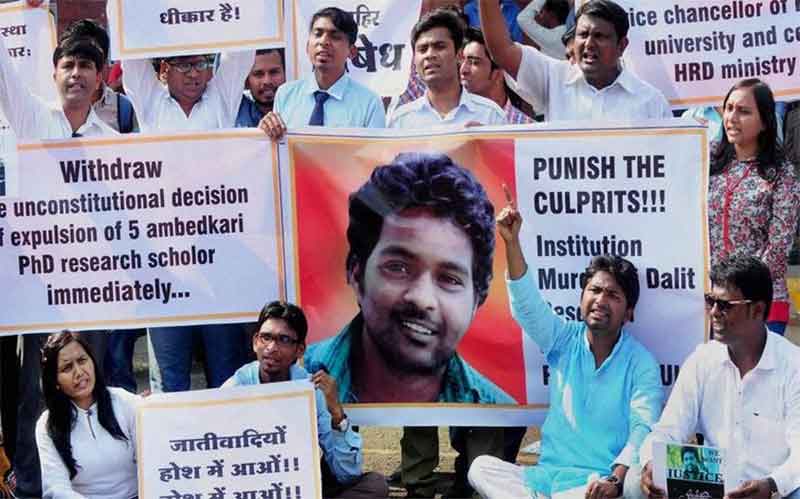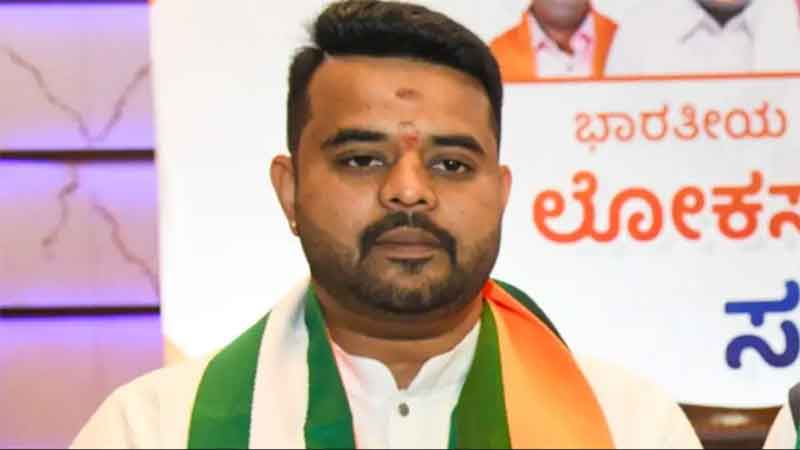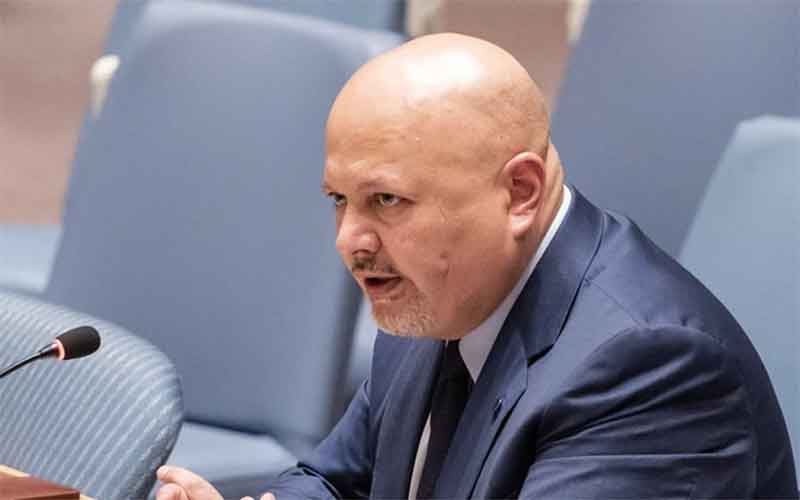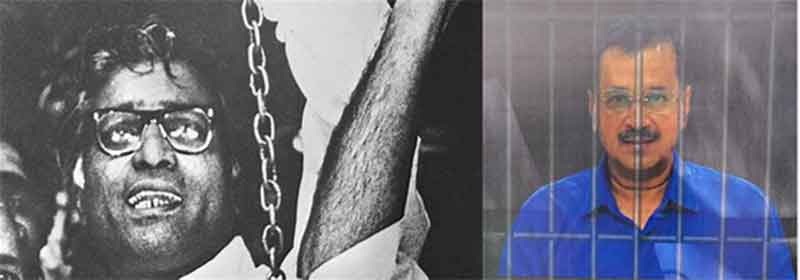
Justice D. Y. Chandrachud, heading a Supreme Court vacation bench, while hearing an appeal by a lawyer on May 23, flared up in an outburst of anger saying that it had become a “fashion” to make allegations against the judiciary. He added: “The stronger the judge, the worse the allegations.” (THE HINDU, May 24). Why is the honourable Justice Chandrachud getting so prickly ? Judges after all are not above the law – and citizens have the right to make allegations against them and their verdicts, which they may consider wrong. Let the judges face the allegations and prove their non-partisanship in delivering judgments, as well as in their occasional knee-jerk utterances in the courts. They are also required to adhere to moral probity in their personal habits, and cannot seek protection on the plea that these habits belong to their private domain.
May I remind Justice Chandrachud that one of his colleagues, who during his tenure as the Chief Justice of the Supreme Court was accused by a junior female employee of sexual harassment ? Till now, the allegation – well publicized at that time – has not yet been probed into adequately to clear up the mess involving a former CJI.
Supreme Court’s recent record
As for the claim about `stronger judges,’ let us see how strong the judges of the Supreme Court have been during the recent times. We can begin with the Supreme Court’s latest May 11 order suspending the operation of Section 124-A of the Indian Penal Code – a legacy from British colonial era. The order has been welcomed by all those who had been fighting for its abrogation. Leading among them is the Editors Guild of India, one of the petitioners which challenged the validity of the law in the Supreme Court. Among others welcoming the verdict, are the Indian chapter of Amnesty International, leaders of political parties ranging from the Congress spokesman Randeep Surjewala and Trinamul Congress MP Mohua Moitra (another petitioner who opposed the law at the Supreme Court) from one spectrum, to the other spectrum of the Left represented by Sitaram Yechury of the CPI(M) and Raja of the CPI , who have taken a step forward by demanding that the apex court must scrap Section 124-A straightaway – which it has the right to do – instead of merely suspending it.
The Supreme Court order surely gives anticipatory protection to those who might be targeted by vindictive ruling powers which are notorious for misusing this law. Almost all ruling parties, whether at the Centre, or the States, irrespective of their political hues, have at one time or another, used the sedition law – mainly against political dissidents, social activists, journalists, among others, just because they dared to express views critical of the ruling parties. The Supreme Court order offers some relief to these victims of the law who are languishing in jails. They can now seek bail.
Need for caution
But let us not be over optimistic about the outcome of the May 11 order – which is being hyped by some sections of the media and the legal community as `historical,’ `unprecedented,’ etc. etc. If we read between the lines of the Supreme Court order, we can find enough loopholes that provide the ruling powers with lots of opportunities to continue its persecution of political dissidents. To start with, the Supreme Court bench instead of giving a firm directive to the state to follow its order, has come out with this namby-pamby request: “We hope and expect that the state and central governments will restrain from registering any FIR, continuing any investigation or taking any coercive measures by invoking Section 124-A….” What is the guarantee that the state and central governments will meet the `hope and expectation’ that are being prayed for by the Supreme Court ?
The affidavit submitted by the government to the Supreme Court says that it will “re-examine and re-consider” Section 124-A. It has not given any time frame, and has added the proviso that such a process can only be undertaken “before the competent forum,” without specifying what can be such a forum. When hearing the case, the Supreme Court bench also did not order any deadline for the reconsideration exercise. Given the Indian state’s proclivity towards procrastination over deciding on issues relating to civil liberties – a habit shared by the legislature, the executive and the judiciary (the latter fond of adjourning of hearings and reserving its judgments), we may never know when or whether this law will be scrapped.
The wording of the apex court’s May 11 order sounds like an ambiguous half-way-house judgment. It is the familiar style of delaying that had been followed by the judges during the last several years. The ambiguity stems from a sense of ambivalence which is often shared by the judges sitting on the benches, who are required to deliver judgments on controversial issues involving religious conflicts as well as civil liberties of citizens. The latter in particular are being increasingly threatened by the present regime through newly enacted draconian laws (e.g. UAPA) and discriminatory laws (e.g. CAA).
Background to the present case
An examination of the sequence of events leading to the Supreme Court order reveals a tendency towards dilly-dallying and taking U-turns in policies – a habit followed in equal measure by the three pillars, legislature, executive and judiciary.
To begin with the legislature, during all the past seven decades since Independence, our elected representatives in Parliament, irrespective of their political hues, refrained from enacting a legislation to remove the colonial sedition law from the Indian Penal Code. Instead, their parties when in power in states, have had no scruples in using this notorious law to stifle opposition. They have employed the executive – the second pillar of our democracy – to carry out their objectives, by unleashing the police on their opponents on the plea of suppressing sedition.
The number of sedition cases and individuals implicated in them has gone up since 2014, when the BJP came to power at the Centre and several states. According to the data released by the NCRB (National Crime Records Bureau), from 2016 to 2019 sedition cases increased by 160%, while the rate of conviction in these cases fell from 33.3% to 3.3% – thus indicating how flimsy and untenable the grounds were on the basis of which thousands were kept incarcerated all those years by the administration, and the majority of whom were finally acquitted.
Meanwhile, the Law Commission of India in August 2018 came up with a paper saying: “…the global trend has largely been against sedition (laws) and in favour of free speech.” But the Law Commission did not follow it up with a full-fledged report to recommend the abolition of the law – another instance of procrastination. Since the retirement of the last Law Commission chairman Justice B.S. Chauhan, the present NDA government has been postponing the appointment of his successor – thus rendering the headless Law Commission into a dysfunctional body. Yet another instance of deliberate dilly-dallying !
Following wide-spread protests against the operation of this colonial law, and a number of petitions by several civil society activists demanding its abolition that were submitted to the Supreme Court, the latter demanded a response from the BJP government. Initially, its Attorney General K. K. Venugopal sounded insouciant, claiming that there was no need to scrap the sedition law, as it was sacrosanct. He recalled a judgment delivered by the Supreme Court some 60 years ago which upheld the validity of the sedition law, and described that judgment as the “ last word on the law of sedition.”
Poor Shri Venugopal ! He had to hide his face, when a few days later, on May 9, the same government which he represented, filed an affidavit to the Supreme Court through an additional secretary of the Home Ministry, stating that the government had decided to “re-examine and re-consider the provisions of Section 124A (sedition) of the Indian Penal Code.”
Let us await the outcome of the present government’s process of re-examination and re-consideration of that law. Meanwhile, we citizens look up to the Supreme Court hoping that it will scrap the colonial law as unconstitutional. But how is it behaving ?
A Supreme Court – blind, deaf and dumb ?
The honourable judges of the apex court are expected to take a stand according to the principles laid down by the Constitution, and deliver justice as fast as possible to the victims of these unjust laws. Do they remember the dictum: “Justice delayed is justice denied” ? Yet the performance of the Supreme Court benches during the last several years can be described as `justice delayed.’
Justice is represented by the familiar figure of a woman with her eyes blindfolded and a pair of balancing scales hanging from her hands – a statue which we often find in the precincts of some courts. The blindfold is a symbol of the impartiality of the judges who are required to be blind to wealth, power or other privileges that the accused may enjoy, when delivering their judgments. The hanging scales imply that both sides in a dispute need to be looked at and heard to, and their arguments should be weighed in a fair way to deliver justice.
Sadly enough, our judges, starting from the district court level at the bottom, up through the state high courts and finally at the apex, have betrayed the statue of Justice. More than often, the judges lift their blindfold to wink at cases of injustice, and weigh the scales in favour of the powerful. That apart, they also appear to be deaf when hearing pleas by human rights activists, and remain dumb by adjourning or reserving judgments on these pleas.
Citizens look up at the Supreme Court as their final destination for justice, after their long tortuous journey through the cumbersome rigmarole of the labyrinthine Indian legal system. But even after reaching its doorsteps, they often find themselves denied justice.
Let us take up a few recent cases where some of the honourable judges of the Supreme Court should indeed face `allegations’ – the term used by Justice Chandrachud to disparagingly dismiss public complaints against them. Most of these complaints relate to the inordinate delay by them in delivering justice on major issues that affect the rights of citizens. Since 2019, they have been sitting over multiple petitions submitted to them by individuals as well as human rights groups challenging the enactment and implementation of the UAPA (Unlawful Activities Prevention Act) which, they have contended, violates the constitutional rights of citizens. Recently, a group of retired civil servants also came out with a statement opposing the law. Under this draconian law, hundreds of people have been arrested and are languishing in jails. Till now, the Supreme Court has remained deaf to these petitions.
To take another instance, on August 28, 2019, the Supreme Court promised that its five-member Constitutional Bench would examine a batch of pleas challenging the Centre’s decision to change the constitutional status of Jammu and Kashmir. The matter was listed before the Constitutional Bench headed by the then Chief Justice, S.A. Bobde on March 2, 2020. Two years have passed, and we have not yet heard from the judges. Meanwhile, in Kashmir Valley, the Centre’s decision to abrogate Article 370 (which provided certain protective rights to its residents) has generated popular unrest, threatening to explode into yet another bout of violence.
The next instance is the case over the Citizenship (Amendment) Act of December 11, 2019. Several individuals and citizens’ groups have challenged the Act, on grounds of discrimination against Muslims. Some 143 petitions questioning its constitutionality have been submitted to the Supreme Court. Till now, there has been no response to those petitions by the apex court.
Apart from all these petitions in response to which the Supreme Court has remained deaf and dumb over the last couple of years, there are other equally important petitions which are pending before it. One such batch of pleas consists of petitions filed by the CPI(M), and civil liberties groups like Common Cause and Association for Democratic Reforms, challenging the Union government’s electoral bond scheme of 2017, alleging that it was “an obscure funding system which is unchecked by any authority.” The apex court is still sitting silent on this urgent matter which involves the issue of procedures that need to be followed to ensure a fair election.
The Supreme Court even refuses to consider petitions relating to the fundamental right to shelter of common citizens, as evident from its recent rejection of a PIL (Public Interest Litigation) filed by the CPI(M) challenging the South Delhi Municipal Corporation’s planned anti-encroachment drive in Shaheen Bagh on May 9 and 13. The judges admonished the petitioner saying: “Do not …come on behalf of a political party.” What a strange argument ! Does it mean that a political party has no right to take up the cause of citizens and approach the courts ?
The other face of the Supreme Court – breathtaking leniency towards petitioners who come from a majoritarian religious-political background
In contrast to the above mentioned cases of the apex court’s delay in pronouncing its judgments, and refusal to entertain PILs relating to civil liberties, there are other cases where its honourable judges, at the drop of a hat, grant bail to those belonging to a Hindu communal group, or are ready to accept pleas from such a group of petitioners.
Let us take a few of such cases. The classic example is the Supreme Court’s November 9, 2019 verdict on the plea by Hindu religious groups, backed by the ruling BJP party, to build a Ram temple on the site of the destroyed Babri Masjid. The apex court judges, while criticising the destruction of the Babri Masjid, yet granted the vandals who destroyed it the right to build a Ram Mandir on the site.
This verdict appears to have set a precedent for the Supreme Court judges, who are inclined to deliver judgments in accordance with the spirit of that verdict. In other words, they tend to be soft towards crimes committed by these Hindu religious groups (patronized by the ruling BJP), and readily accept their petitions and grant verdicts in their favour.
To give an example of leniency to criminals, on May 17, 2022 a Supreme Court bench comprising judges Ajay Rastogi and Vikram Nath granted bail to Jitendra Narayan Tyagi. He was accused of delivering a hate speech against Muslims at the Dharma Sansad (organized by Hindu religious groups) at Haridwar in December 2021. The judges granted him bail on medical grounds – without specifying what ailments he was suffering from that required urgent medical treatment.
In sharp contrast to this relief given to this Hindutva champion of anti-Muslim hatred, the judiciary has been totally blind to the fate of G. N. Sai Baba, a former professor of Delhi University, who is wheel chair bound and has been languishing in Nagpur Central Jail for the last five years, although medically certified as a ninety percent physically disabled person. His fault – as a civil rights activist he had taken up cases of injustice against the poor. He was first arrested in 2014 on the allegation that he had links with Maoists. He enjoyed a brief respite, when the then Supreme Court bench of judges granted him bail in 2016. But he was re-arrested in 2017, and sentenced to life imprisonment. Ever since then he has remained incarcerated in the notorious `anda cell’ (an egg-shaped confined space) in Nagpur Central Jail for the last five years. Even after the UN Human Rights Special Rapporteurs team came out with a report in June 2018, urging the Indian government to redress his grievances, the Supreme Court remains a deaf and dumb witness to his sufferings, although its judges have the suo motu power to intervene and hear his case.
On the other hand, to give an example of the Supreme Court’s willingness to admit pleas by the Hindutva groups – in March 2021, it admitted a petition by the BJP spokesperson Ashwini Upadhyay challenging the constitutionality of the 1991 Places of Worship Act. This Act guarantees the maintenance of the religious status of any place of worship as it was on August 15, 1947 – the day of India’s Independence. It made an exception only in the case of what it called the `disputed structure’ of Ayodhya, in other words the Babri Masjid, where the Act would not apply. It should be recalled that the Act was enacted at a time when the Sangh Parivar-led movement for the demolition of the Babri Masjid was gaining momentum through the murderous Ratha Yatra led by Advani. The decision to exempt the mosque from the purview of the Act was a concession by the then Congress government to assuage the feelings of the Hindus that were roused by the Ratha Yatra. This concession actually paved the way for the demolition of the mosque in 1992.
After all these years, now by admitting Ashwini Upadhyay’s petition challenging the Act, the Supreme Court is indirectly encouraging the Sangh Parivar to reinforce its old claim on the sites of mosques in Mathura and Varanasi. It has opened up a can of worms, with more such petitions being submitted by the Sangh Parivar demanding excavation of sites like Qutub Minar and Taj Mahal, claiming that they were built upon the ruins of Hindu temples destroyed by Muslim rulers.
The Supreme Court has already conceded to the demands of the Sangh Parivar by allowing the inspection of the premises of the Gyanvapi mosque by a survey commission, whose findings have been mired in controversies, leading to the dismissal of its head. The survey commission has not yet published its report, but according to leaked information, it is supposed to have discovered a stone image in the pond of the mosque that it claims to be a `shiva linga,’ but which is described by the clerics of the mosque as a fountain which provides water for the devotees to wash their hands and feet before going for their prayers. The Supreme Court, instead of releasing the report in public, examining it and taking a firm decision on the issue, is dilly-dallying by shifting the case to the district judge.
The record of the performance of these lower court judges at the district level and session’s court is far from satisfactory. Most of them are ill-educated in jurisprudence, and pass judgments which are finally dismissed by higher courts – only after time-consuming appeals. The latest example of such miscarriage of justice by the lower courts is the case relating to Aryan Khan, who was hauled up by the NCB (Narcotics Control Bureau) on the charge of possession of drugs, in October last year. He had to spend 27 days behind bars, during which time his appeal for bail was rejected twice – first by a magistrate’s court, and next by a session’s court. The Bombay High Court finally granted him bail. Now after seven months of mental torture that Aryan Khan had to undergo, the Narcotics Control Bureau has admitted its mistake in accusing him, and declared him innocent.
Given this atrocious record of the lower courts (which sentenced an innocent person to imprisonment merely on the basis of a report by NCB without thoroughly examining it), why has the Supreme Court placed trust in another lower court by shoving off the Gyanvapi mosque case to a Varanasi district court judge ? Did the Supreme Court bench examine the credentials of this judge, before transferring the case to him ?
Sad decline in the professional integrity of Supreme Court judges
While talking about the declining level of juridical functioning in the lower courts, we cannot also ignore a similar trend of decline in the professional integrity of some of the judges of the Supreme Court.
The present Chief Justice of the Supreme Court, N.V. Ramana delivers impressive speeches in public fora, criticizing the sedition law, and stressing the need for delivering justice to the common people. But within the precincts of his court, he allows the worst forms of injustice by his colleagues – as evident from the cases narrated above. Such judgments that deny justice to the common people are not exceptions, but rather follow a universal pattern of ignoring the human rights of political dissidents and of subservience to the Hindu majoritarian demands.
While we may trust Justice Ramana’s personal integrity, can we trust his colleagues ? When Justice N. V. Ramana at a public forum talked about the need for ‘Indianization’ of the judicial system, in the sense of making it more accessible to the common people in their modern vocabulary, at the same time his colleague in the Supreme Court, Justice S. Abdul Nazeer delivered a speech where he advocated the `Indianization’ of the legal system on lines of traditional Hindu orthodox laws. Addressing the 16th National Council meeting of the Akhil Bhartiya Adhivakta Parishad (a well-known appendage of the Sangh Parivar) in Hyderabad on December 26, 2021, the honourable judge said: “ We must go back in time to the ancient Indian scriptures to get a true and correct picture of the legal system of ancient India…legal traditions as per Manu, Kautilya, Brihaspati, Narada, Yagyavalka and other legal giants of ancient India.” Does Justice Abdul Nazeer want to implement the laws of Manu which discriminate against women and depressed castes ? Does the CJI agree with his views, which are likely to impact on the judgments that he may deliver on controversial cases ?
With such judges at the helm of the apex court, what can the aggrieved citizens expect from them ? Some of their judgments (which often punish the victim of a crime instead of the criminal) remind me of a story in an old Sanskrit political satire Hasyarnava-Prahasanam (The Ocean of Laughter) written in the 19th century by Jagadeswara Bhattacharya. The story is about a customer of a barber’s shop who approached a minister to complain that the barber, instead of clipping his nails had damaged his eyes by carelessly lifting his nail-clipping instrument to his face and clipped it. After hearing the case, the minister ordered the complainant to pay the barber the cost of the nail-clipping instrument that had broken when piercing his eyes !
Sumanta Banerjee is a political commentator and writer, is the author of In The Wake of Naxalbari’ (1980 and 2008); The Parlour and the Streets: Elite and Popular Culture in Nineteenth Century Calcutta (1989) and ‘Memoirs of Roads: Calcutta from Colonial Urbanization to Global Modernization.’ (2016).










































